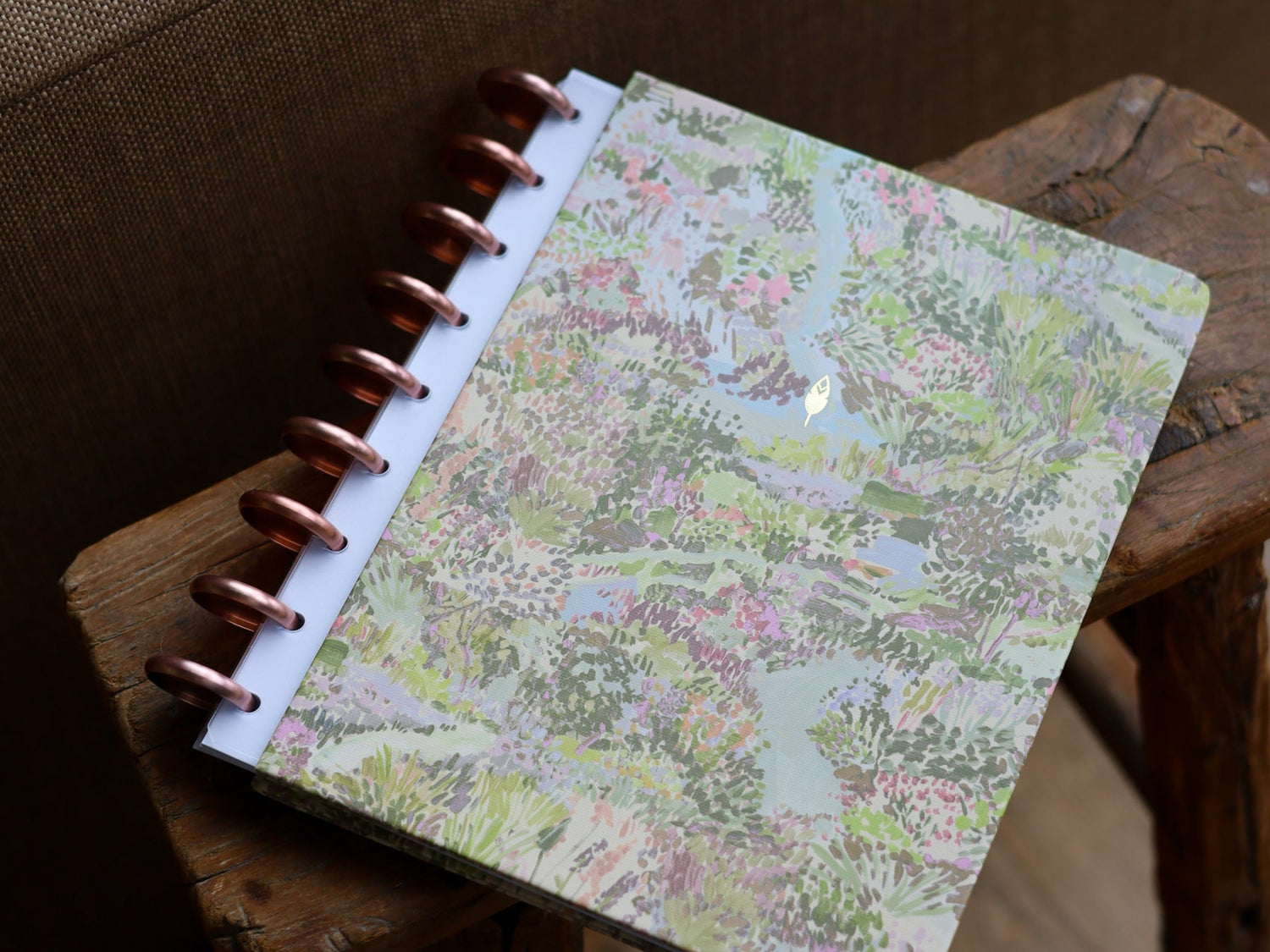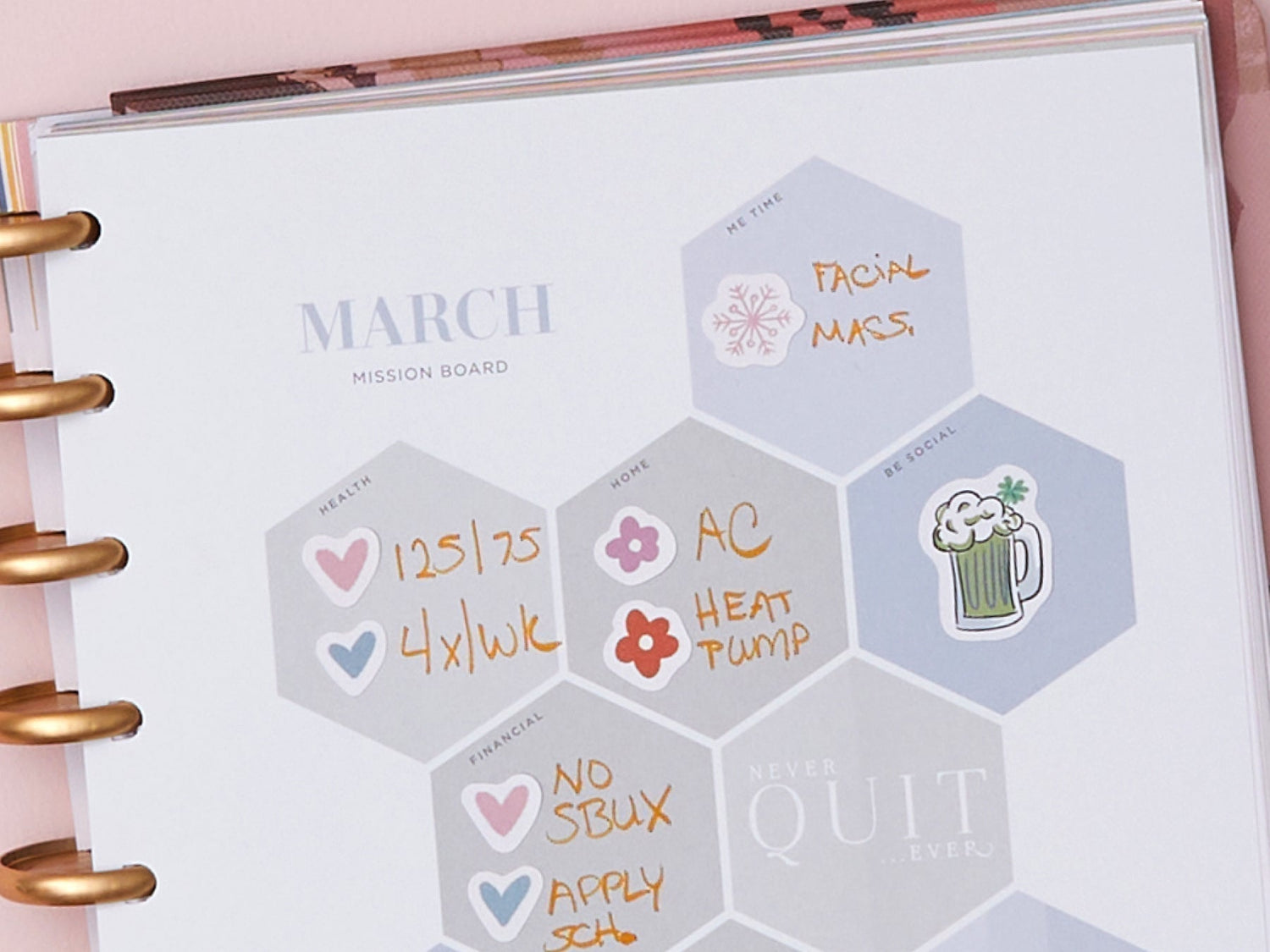Classic Weekly layout users, this blog is for you!
But first, an explanation to those who may be new here: our Classic Weekly layout is a vertical planning page. Unlike traditional vertical layouts with a chronological view, our Classic Weekly offers the Priority List: an organized way to list your tasks by importance and urgency in three categories: Escalate, Cultivate, and Accommodate.
If you're not sure what that means, you're not alone. Our customer service team says some of the most frequently asked questions are about the Priority List and how it works, so we created a quick guide to help you use it.
Escalate
Escalate is where you list things you are scheduled to do or must do. They are urgent and important.
Escalate tasks examples:
School drop-off/pick-up
Scheduled meetings, doctor appointments, or work/school calls
Classes or fitness classes that you physically attend (Yoga at 9:00 am)
NOTE: If your day includes no obligations of any kind, then you can list tasks that will bring you closer to your North Star or your purpose. What can you do today to bring you closer to your goals? Those things can go under Escalate.
Cultivate
If your day is full of appointments and obligations, things that could bring you closer to your goals should go under Cultivate. These things drive you toward personal or professional goals. They are important but not urgent.
Cultivate tasks examples:
Start a new project.
Read an article, listen to an informative podcast, or write in your journal.
Schedule home-related maintenance appointments.
Research vacation ideas, new job openings, or investment opportunities.
Anything that enables you to do more quality work in the future
Accommodate
The last category includes our daily to-dos; they're everyday tasks. They are urgent but not usually important.
Accommodate tasks examples:
Answering emails
Returning phone calls
House or yard work
Cooking and cleaning
Laundry
Priority List: Define your tasks with CLEAR
Tanya Dalton, our founder, and notable productivity expert, uses CLEAR Questions to help you define tasks as Important or Urgent.
For each of your tasks, ask the following questions:
C – Is it connected to my North Star? (your purpose, mission, vision, or core values)
L – Is it linked to a goal?
E – Is it essential? (It must be done by me and no one else.)
A – Is it advantageous? (Is this an investment in Future Me?)
R – Is it reality-based? (Or is this just me overthinking it?)
- If you answer Yes to three or more questions, that task is Important to you.
- If you answer Yes to one or two questions, the task is Urgent but not necessarily Important.
If you’re still confused, remember this: the Priority List which includes Escalate, Cultivate, and Accommodate task grouping is really just an organized to-do list with intention. Anyone can wake up and start answering emails, but if you start each day with intention and purpose, you accomplish your goals and focus on what’s most important to you. That’s what the Priority List is designed to do.
As you can see, the Priority List isn't for everyone. Our Daily layout might be best for you if you have back-to-back meetings every day – it offers a chronological view of your day from 5:00 am to 11:00 pm.
But if you are a stay-at-home mom, small business owner, or work part-time, the Classic Weekly planner layout may help you prioritize your many tasks and know where to start on the busiest days.
If you want more freedom to plan however you like, our Flex Weekly layout offers the most writing space and does not use the Priority List or times of day.
Shop these and other layouts here at inkwellpress.com. Thank you for reading.



